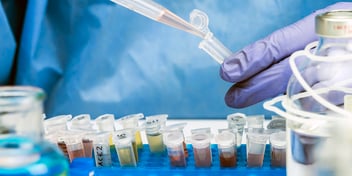The latest on COVID-19 and wastewater
As COVID-19 wastewater monitoring projects continue to unfold across the globe, one microbiological expert says this developing body of research will be crucial in helping authorities make decisions about how to locate and contain the virus.
Presenting a keynote address during Ozwater’20 Online, International Water Association COVID-19 Task Force Chair and 2016 Stockholm Water Prize recipient Dr Joan Rose said that, while the water sector has lots of experience with pathogen control, the novel coronavirus has thrown up plenty of new questions.
“It's well known that interior organisms, primarily in the groups of viruses, bacteria and parasites, are found in wastewater in very high concentrations. And now we have a new virus that's showing up in wastewater,” she said.
“The coronavirus is a positive-sense, single-stranded RNA virus, which means it's pretty simple. It has a single RNA genome inside a protein capsid. Surrounding that protein capsid is an envelope. This envelope layer has glycoproteins in it.
“As the science emerged, it became clear early on that the virus could replicate in a number of types of cells throughout the body, including the respiratory and the gastrointestinal tract.”
Rose said that as soon as the international water sector discovered the virus could be carried in faeces, two key issues emerged.
“If the virus occurs in wastewater, what is its fate? Is it alive? How do we remove it? Can we inactivate the virus in wastewater treatment processes?” Rose said.
“Second, what emerged very quickly was the ability to monitor wastewater as a way to measure the spread of the virus in communities.”
The issue with water
Early studies carried out in China suggested the virus was cultureable when taken from samples of human waste, but Rose said further studies have not been able to replicate the virus from wastewater.
“Once it gets into the environment, we actually don't have very much data [to suggest] the virus is infectious when it's excreted,” she said.
“[One study of] a number of patients showed scientists were readily able to culture the sample from throat swabs, but they could not culture it from stool samples.
“[Another] study that emerged gave us some clues as to what is going on. The results showed that while the viruses were growing in the intestinal lumen and being synthesised and released, they were rapidly inactivated in the colonic fluids.
“We need more evidence than these studies, but this suggests that what we see in faeces, what we see in wastewater, is a marker or target associated with the virus.”
Wastewater wisdom
COVID-19 is not the first virus researchers have traced through wastewater monitoring. Rose pointed to global work on polio surveillance, which helped link what was happening in wastewater with what was occurring in the community.
“There's a strong interest in linking the disease cases and infections, even those that maybe are asymptomatic, in the community with concentrations in sewage,” she said.
“Why would we want to do this? There’s interest in monitoring the spread of the disease, the speed of this spread, whether there's going to be a second wave and the impacts of some of our ways to control the virus, like social distancing.
“There’s been a real urgency in the wastewater business to get on this because we were shut down and now we're starting to reopen our cities and our schools. And if we had a way to monitor that, it would be very beneficial.”
Future choices
Ultimately, Rose said the information garnered from wastewater monitoring could help authorities make decisions, particularly in terms of how to manage case numbers moving forward.
“There may be interest in how we vaccinate. We're going to have to vaccinate, probably in a series of approaches where we vaccinate healthcare workers and more high-risk individuals first. How do we watch the impact as we start to vaccinate the population?” she said.
“Also, if this happens again in the future, are we going to be better prepared to mobilise this approach? And how would it help public health in our communities?
“We might be able to put together models in the future that give us a better way to predict the concentrations.”
To learn more about Ozwater’20 Online and to register, click here.


